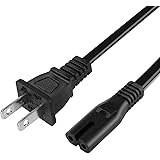Are you navigating the dynamic landscape of mobile gaming, wondering which gaming tablet truly offers the best performance and value in 2025? The video above offers an excellent overview of top contenders across various price points, from budget-friendly options to high-end powerhouses. Building on that foundation, this comprehensive guide delves deeper into the technical specifications and real-world performance metrics of these devices, helping you make an informed decision for your ultimate gaming experience.
Best Gaming Tablets for Every Budget: A Deep Dive into Performance and Value
Selecting the ideal best gaming tablet requires a nuanced understanding of hardware capabilities, display technology, and software optimization. Whether your budget is modest or extensive, the market offers compelling options designed to elevate your mobile gaming sessions. We analyze each category, providing expert insights into what makes these tablets stand out.
Unlocking Value: Top Gaming Tablets Under $200
Entry-level tablets have evolved significantly, now offering robust performance for casual gamers and multimedia enthusiasts without a hefty price tag. These devices prioritize affordability while delivering a respectable user experience.
ALLDOCUBE iPlay 60 Pro: A Budget Contender
The ALLDOCUBE iPlay 60 Pro distinguishes itself as a formidable budget-friendly option. Its 11-inch IPS display, coupled with a 90 Hz refresh rate, provides a remarkably fluid visual experience for its price segment. This higher refresh rate significantly reduces motion blur, making browsing and light gaming feel notably smoother than standard 60Hz panels.
Under the hood, the MediaTek Helio G99 processor powers this device. This octa-core chipset, fabricated on a 6nm process, offers a solid balance of power efficiency and performance for everyday tasks and moderate gaming. Benchmark comparisons often place the Helio G99 competitive within its tier, demonstrating sufficient muscle for titles like Mobile Legends or Call of Duty Mobile on lower to medium settings. The substantial 7,000 mAh battery ensures extended uptime, often translating to 8-10 hours of mixed usage, including several hours of gaming.
While the quad speakers enhance media consumption, potential users should note its Android version might not be the absolute latest. Widevine L1 support, however, guarantees high-definition streaming on platforms like Netflix and Amazon Prime Video, a crucial feature for many users.
Lenovo Tab M11: Quality Meets Affordability
The Lenovo Tab M11 presents another excellent blend of quality and cost-effectiveness. Its 11-inch display delivers sharp visuals, crucial for immersing oneself in graphic novels or enjoying cinematic content. For gaming, the MediaTek Helio G88 processor, while slightly less powerful than the G99, capably handles casual titles and ensures smooth streaming post-software updates.
The Helio G88, also an octa-core chip, is often found in devices targeting the mainstream segment. It’s perfectly adequate for popular casual games and older demanding titles. Users report good optimization for daily applications, making it a reliable daily driver. The quad speakers contribute to a superior audio experience, often exceeding expectations for a tablet in this price category.
Battery longevity is a significant advantage, often lasting a full day of mixed use with ease. While power users might seek more raw performance, the Tab M11 excels as a reliable device for students and casual users who prioritize consistency and affordability over bleeding-edge gaming capabilities.
Mid-Tier Powerhouses: Gaming Tablets from $200 to $300
Stepping into the $200-$300 bracket introduces tablets with enhanced processors and often larger, more refined displays, offering a more robust gaming experience without entering premium territory.
Xiaomi Redmi Pad Pro: Large Screen, Zippy Performance
The Xiaomi Redmi Pad Pro offers a large screen experience at an accessible price point, making it a compelling choice for media and casual gaming. Its Snapdragon 7s Gen 2 chipset is a notable upgrade, providing a “zippy” performance that facilitates seamless navigation and multitasking. This processor, built on a 4nm process, offers improved efficiency and stronger GPU capabilities compared to the MediaTek chips in the sub-$200 category.
For gaming, the Redmi Pad Pro handles popular titles like PUBG Mobile and Asphalt Legends Unite smoothly, often sustaining stable frame rates on medium settings. However, more graphically intensive games such as Genshin Impact might necessitate lowering graphic settings to achieve consistently playable frame rates, typically targeting 30 FPS for a comfortable experience. The immersive large display enhances gaming, though its weight might affect ergonomics during extended sessions for some users.
Storage options are key here; opting for the 256 GB version or utilizing a microSD card slot is highly advisable to accommodate game installations and media libraries. This tablet serves as an excellent option for those prioritizing a spacious display for entertainment and moderate gaming.
Google Pixel Tablet: Smart Home Integration with Gaming Potential
The Google Pixel Tablet presents a unique proposition, blending tablet functionality with smart home hub capabilities. Powered by Google’s Tensor G2 chip, the same silicon found in Pixel 7 series smartphones, it delivers smooth everyday performance. The Tensor G2, with its focus on AI and machine learning, also provides respectable graphical prowess.
Gaming performance on the Pixel Tablet is quite decent; for instance, it achieves approximately 58 FPS in Genshin Impact on medium settings. This indicates solid mid-range gaming capabilities, suitable for most popular titles. However, pushing graphics to the highest settings can indeed lead to thermal throttling and noticeable frame drops, a common characteristic of passively cooled devices under heavy load. The included charging speaker dock transforms it into a Nest Hub-like device, adding significant utility beyond a standard tablet, making it ideal for users embedded in the Google ecosystem seeking a dual-purpose device.
While battery life is adequate for mixed use, its primary appeal lies in its ecosystem integration and smart home features rather than being a pure gaming-first device. The price point is slightly higher, reflecting its enhanced functionality and premium ecosystem benefits.
Enhanced Experience: Gaming Tablets in the $300 to $400 Range
This price bracket introduces more premium features, including stylus support, stronger processors, and refined industrial designs, catering to users who demand a higher-quality experience for both gaming and productivity.
Samsung Galaxy Tab S9 FE+: Premium Feel, Balanced Performance
The Samsung Galaxy Tab S9 FE+ offers a premium aesthetic and a large, vibrant 12.4-inch display, making it an attractive option for those desiring a high-end Android tablet experience without the flagship cost. Its sleek design and inclusion of the S Pen enhance its utility for note-taking, drawing, and precise gaming inputs.
The Exynos 1380 processor, an octa-core chip, provides competent performance for daily tasks and a wide array of games. While it handles many games well, it might not satisfy the most ardent hardcore gamers seeking consistently ultra-high frame rates on the most graphically demanding titles. Performance benchmarks typically place it below flagship chips, yet it remains perfectly capable for a vast majority of mobile games.
Despite its premium feel, it makes some compromises to achieve its price point. Users prioritize top-tier gaming performance might find the standard Galaxy Tab S9 or other Snapdragon-powered alternatives more compelling. However, for a balanced device that excels in multimedia, light productivity, and a wide range of games, the S9 FE+ is a strong contender.
Apple iPad Mini (6th Gen): Compact Powerhouse for Gamers
The Apple iPad Mini (6th Gen) is a testament to the adage that great things come in small packages. Its compact 8.3-inch Liquid Retina display, combined with the formidable A15 Bionic chip (the same processor found in the iPhone 13 series), makes it an exceptionally powerful and portable gaming device. The A15 Bionic features a 6-core CPU and 5-core GPU, delivering class-leading performance that effortlessly handles graphically intensive games like Genshin Impact and PUBG, often at stable 60 FPS on high settings.
Its power extends to advanced emulation, allowing enthusiasts to delve into retro gaming with remarkable fidelity. The smaller form factor, while excellent for portability and one-handed use, can feel restrictive for split-screen multitasking or games with extensive on-screen controls. Despite its investment-level price, particularly with accessories like the Apple Pencil, its raw processing power and access to Apple’s vast ecosystem of optimized games offer unparalleled performance for its size.
Premium Performance on the Go: Gaming Tablets from $400 to $600
This segment represents the upper echelon of Android tablets, featuring flagship-grade processors, advanced cooling, and superior display technologies, designed for discerning users and serious mobile gamers.
OnePlus Pad 2: Flagship Android Experience
The OnePlus Pad 2 delivers a truly premium Android tablet experience, anchored by its powerful Snapdragon 8 Gen 3 processor. This chipset, one of the most advanced mobile platforms available, ensures rock-solid performance across all applications, from demanding games to intensive productivity tasks. Coupled with ample RAM, multitasking is seamless, and games run at consistently high frame rates with maximum graphic settings.
The large, vibrant display is a highlight, offering excellent color accuracy and brightness for both media consumption and immersive gaming. Its exceptional battery life, often exceeding 12 hours of active use, is complemented by ultra-fast 67-watt charging, minimizing downtime. The six-speaker setup produces impressive spatial audio, deepening immersion. While it might lack a 3.5mm headphone jack or expandable storage, its core performance and premium features position it as a top choice for a high-performing Android tablet user.
Lenovo Legion Y700 2025: A Gamer’s Dedicated Machine
The Lenovo Legion Y700 2025 is engineered from the ground up specifically for mobile gaming, offering a compact yet incredibly powerful experience. Also featuring the Snapdragon 8 Gen 3 processor, it ensures an incredibly smooth and responsive gaming experience, pushing frame rates to their limits on its high refresh rate display. This tablet isn’t just about raw power; it incorporates an advanced cooling system, a critical component for sustaining peak performance during prolonged, intense gaming sessions, preventing thermal throttling that plagues less optimized devices.
The dual X-axis linear motors provide realistic haptic feedback, adding a new dimension to gameplay, allowing players to feel in-game actions with greater fidelity. While battery life is decent, the fast charging capability ensures minimal interruption to gaming marathons. This tablet is the quintessential choice for the hardcore mobile gamer prioritizing a portable device capable of handling any demanding title thrown its way, though it makes concessions in areas like camera performance and productivity features.
Flagship Frontiers: Elite Gaming Tablets at $600+
At the pinnacle of the tablet market, these devices offer uncompromising performance, cutting-edge display technology, and sophisticated ecosystems, catering to professionals, creators, and gamers who demand the absolute best.
Apple iPad Pro M4: Unmatched Performance and Display
The new Apple iPad Pro M4 represents the zenith of tablet technology, delivering an unparalleled user experience. Its Ultra Retina XDR OLED display is arguably the finest screen on any mobile device, offering stunning vibrancy, true blacks, and exceptional brightness (up to 1000 nits full-screen, 1600 nits peak for HDR content). This makes it ideal for gaming, professional content creation, and media consumption, even in challenging lighting conditions.
Powered by the revolutionary M4 chip, built on a second-generation 3nm technology, the iPad Pro M4 delivers desktop-class performance, easily handling the most graphically intensive games at peak settings and sustaining high frame rates. Its advanced Neural Engine also accelerates AI-driven tasks, enhancing app functionality. For creative professionals, demanding gamers, or anyone seeking the absolute best tablet experience, the iPad Pro M4 stands alone, justifying its premium price through sheer power and display quality. Upgrading from an M2 iPad Pro, however, might only be worth it for users needing the absolute latest in display technology or those pushing their devices to the extreme for professional workflows.
Samsung Galaxy Tab S10+: Versatile Android Powerhouse
The Samsung Galaxy Tab S10+ is a stellar Android tablet designed to handle virtually any task with ease. Its vibrant display and smooth performance are driven by a top-tier Android flagship processor, ensuring seamless multitasking, fluid gaming, and lag-free video playback. The included S Pen significantly enhances productivity, making it an excellent tool for note-taking, precise inputs in creative applications, and detailed planning.
A notable feature is its parent-friendly mode, transforming the tablet into a safe, engaging environment for children with educational and entertainment content, alongside robust parental controls for screen time and app access. While its cameras are good, they generally fall short of smartphone flagship standards. For users who prefer the Android ecosystem and desire a powerful, versatile device capable of balancing gaming, productivity, and family-friendly features, the Galaxy Tab S10+ is an outstanding choice, offering a compelling alternative to Apple’s ecosystem.
Choosing Your Ultimate Gaming Companion
Selecting the best gaming tablet involves more than just looking at the price tag. Consider your primary use case: Are you a casual gamer, a hardcore enthusiast, or someone who needs a device for both gaming and productivity? Prioritize key specifications:
- Processor (CPU/GPU): Directly impacts game performance and graphic fidelity. Snapdragon 8 Gen 3, Apple’s M-series, and A-series chips offer peak performance.
- Display: Look for high refresh rates (90Hz, 120Hz) for smoother visuals, and OLED/AMOLED for vibrant colors and deep blacks. Screen size (8-12+ inches) affects portability versus immersion.
- Battery Life & Charging: Essential for extended gaming sessions. Fast charging minimizes downtime.
- RAM & Storage: Adequate RAM ensures smooth multitasking, while sufficient storage is crucial for game installations.
- Cooling System: Important for sustained performance in demanding games, preventing thermal throttling.
- Ecosystem: Consider integration with your existing devices (Apple, Android, Google).
- Additional Features: Stylus support, smart home integration, quad speakers, haptic feedback can enhance the overall experience.
The market for the best gaming tablet in 2025 is incredibly diverse, offering solutions tailored to every budget and preference. By carefully evaluating these factors alongside the excellent recommendations from the video and our expanded analysis, you are well-equipped to choose a device that not only meets but exceeds your mobile gaming expectations.









